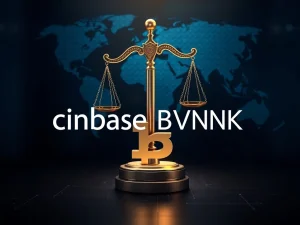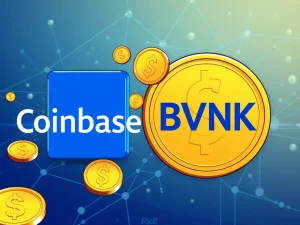Crucial Skepticism: Tokenized Bank Deposits Face Stiff Challenge from Stablecoins

The landscape of digital finance is rapidly evolving. Many financial institutions now explore tokenized bank deposits. However, a prominent voice from academia offers a cautionary perspective. Columbia Business School adjunct professor Omid Malekan raises significant doubts. He suggests stablecoins present a far superior alternative. This debate holds crucial implications for the future of money and the broader financial ecosystem.
Unveiling the Limitations of Tokenized Bank Deposits
Financial institutions have begun experimenting with tokenized bank deposits. These are essentially bank balances recorded on a blockchain. Professor Malekan, a respected voice in digital finance, believes this technology is fundamentally flawed. He argues it will ultimately lose out to established stablecoins. Malekan highlights key areas where tokenized deposits fall short. He specifically points to their lack of flexibility and technical features.
Consider the core difference in their underlying structure. Overcollateralized stablecoin issuers must maintain a 1:1 reserve. They back their tokens with cash or short-term cash equivalents. This provides a strong liability perspective. In contrast, banks operate on a fractional reserve system. This means they hold only a fraction of customer deposits in reserve. Consequently, Malekan views stablecoin issuers as inherently safer from a liability standpoint. This structural disparity forms a foundational part of his critique.
Stablecoins: A Superior Digital Asset for the Banking Industry?
Beyond security, stablecoins offer distinct advantages. One significant feature is their composability. This means users can transfer them across the crypto ecosystem. They can also integrate them into various decentralized applications. For example, stablecoins power much of the activity in decentralized finance (DeFi). This open and interoperable nature provides immense utility. Furthermore, stablecoins facilitate global transactions efficiently. They do not depend on traditional banking hours or international transfer protocols.
Conversely, tokenized bank deposits face significant restrictions. They are typically permissioned. This means access and usage are controlled. They also incorporate Know-Your-Customer (KYC) controls. These measures limit their functionality. Malekan likens them to a checking account. He states, “You could only write checks to other customers of the same bank.” This analogy powerfully illustrates their inherent limitations. This restricted nature severely curtails their potential applications.
The growth of stablecoins as an asset class is undeniable. Data from RWA.XYZ shows a consistent upward trend. This growth reflects their increasing adoption and utility within the digital economy. This trajectory contrasts sharply with the conceptual hurdles facing tokenized bank deposits.
The Restricted Functionality of Tokenized Bank Deposits and DeFi Potential
Professor Malekan further elaborates on the practical shortcomings of tokenized bank deposits. He questions their very purpose in the digital age. “What’s the point?” he asks. He asserts such tokens cannot serve most activities. For instance, they prove useless for cross-border payments. They also cannot effectively serve the unbanked population. These groups often lack access to traditional banking services. More importantly, tokenized deposits lack composability. They cannot perform atomic swaps with other assets. This significantly hinders their utility in the dynamic crypto space. Crucially, they cannot be used in decentralized finance (DeFi).
The inability to participate in DeFi represents a major drawback. DeFi protocols offer innovative financial services. These include lending, borrowing, and trading. They operate without intermediaries. Stablecoins are central to these activities. Their open and programmable nature allows seamless integration. Tokenized bank deposits, with their permissioned structure, cannot replicate this. This makes them less attractive for innovation. It also limits their appeal to a tech-savvy user base.
The broader real-world asset (RWA) sector continues to expand. This sector includes various physical or financial assets tokenized on a blockchain. Examples include fiat currencies, real estate, equities, bonds, commodities, art, and collectibles. Standard Chartered bank projects this sector to swell to $2 trillion by 2028. This growth underscores the immense potential of tokenization. However, the debate remains whether tokenized bank deposits can truly capitalize on this trend. Or will more flexible assets like stablecoins dominate?
The Yield Factor and Banking Industry Pushback
Another critical point of competition for tokenized bank deposits comes from yield-bearing stablecoins. Stablecoin issuers are finding innovative ways to pass on yield to customers. They often circumvent yield prohibitions, such as those in the GENIUS stablecoin Act. They achieve this through various customer rewards. Malekan argues this creates a significant competitive challenge. Customers naturally seek higher returns on their digital assets. Therefore, stablecoins offering yield become highly attractive.
The traditional banking industry has strongly resisted yield-bearing stablecoins. They fear stablecoin issuers sharing interest with customers would erode their market share. Currently, the average yield on a savings account in the US or UK is well under 1%. Any offering above this rate becomes highly appealing to consumers. This competitive pressure is understandable from a banking perspective. However, it raises questions about consumer choice and market innovation.
New York University professor Austin Campbell has criticized this stance. He accused the banking industry of using political pressure. He believes they aim to protect their financial interests. This comes at the cost of retail customers. This highlights a fundamental tension. It pits established financial institutions against emerging decentralized models. The outcome of this battle will significantly shape the future of digital finance. It will also impact how individuals manage their money and access financial services.
The Future of Digital Finance: Stablecoins or Tokenized Deposits?
Ultimately, the debate between tokenized bank deposits and stablecoins highlights a crucial crossroads for the financial sector. Professor Malekan’s insights provide a clear perspective. He emphasizes the inherent limitations of a permissioned, restricted digital asset. In contrast, he champions the flexibility, security, and composability of stablecoins. These attributes make stablecoins powerful tools for innovation. They also serve as a gateway to the burgeoning world of DeFi.
While banks explore tokenization, they must address these fundamental design challenges. They need to offer a product that genuinely competes with the advantages of existing digital assets. The projected growth of the real-world assets (RWA) sector is immense. However, capturing this value requires truly innovative and open solutions. The market will likely favor assets that offer maximum utility and minimal friction. Therefore, the future of digital money may indeed lean heavily towards the open, composable nature of stablecoins.







